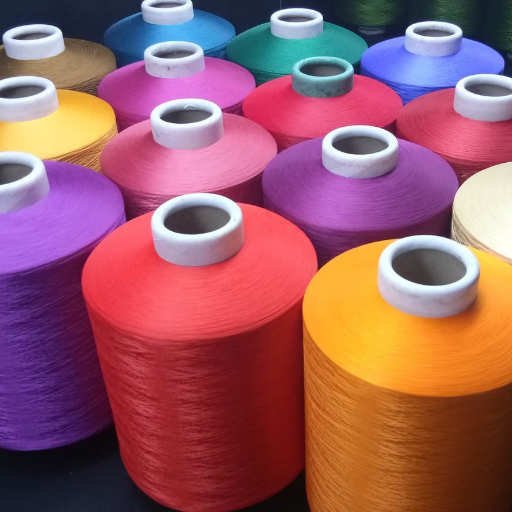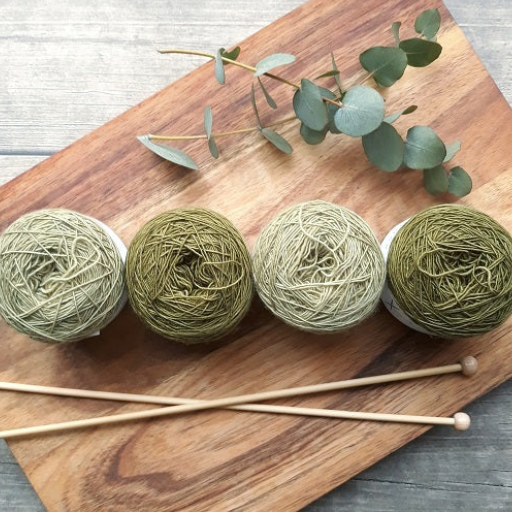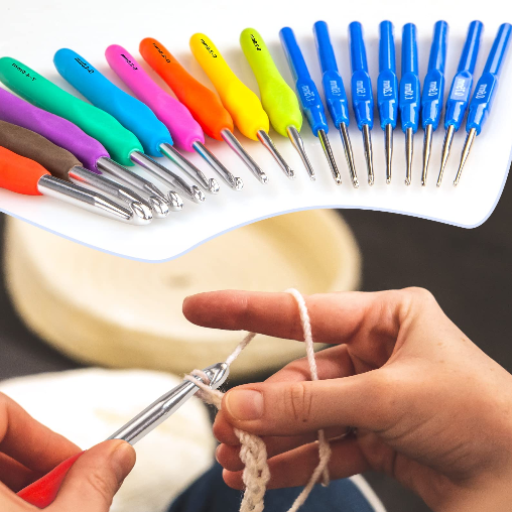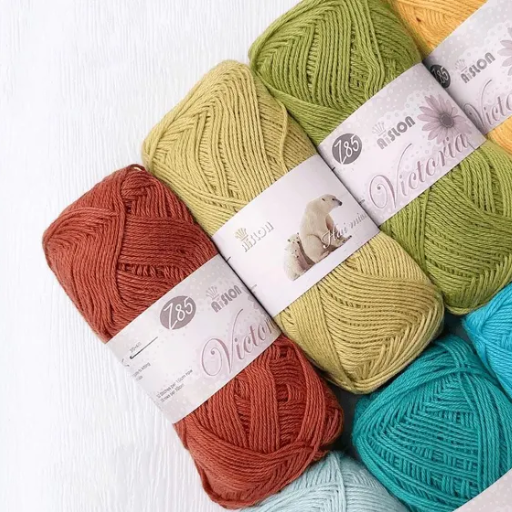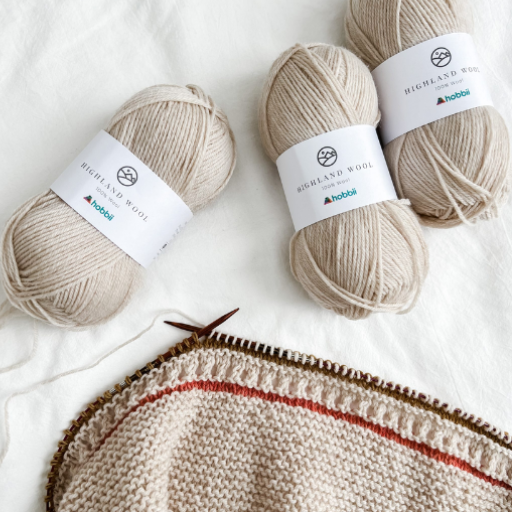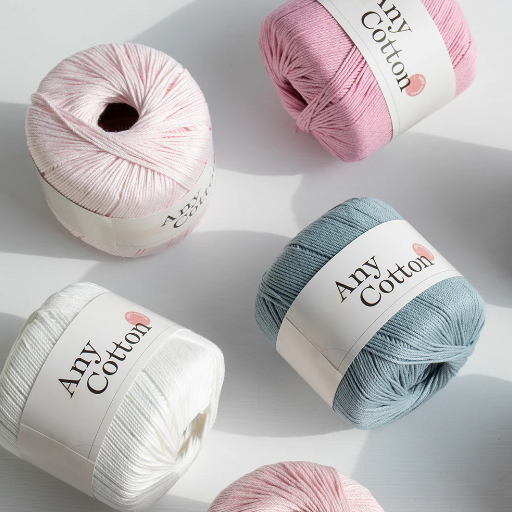Like any other knitting project, making a scarf is surely a rewarding and relaxing endeavor. Beginners and professional knitters alike often wonder, “How long will this take?” The answer is multi-faceted. It can depend on factors such as the complexity of the knitting pattern, yarn type, desired technique, or even the thought-to-be abstract notion of speed. In this article, we will delve into every aspect that could help you gauge the timeframe needed for knitting a scarf satisfactorily. Everyone has different expectations, whether it be a straightforward and comfortable piece or a big, complex structure. Either way, we aim to provide you enough information regarding knitting to help you set feasible deadlines.
How Long Does It Take to Knit a Scarf as a Beginner?

A novice crafting their first knitted scarf will spend anywhere between 15 to 25 hours on it. This varies based on yarn type, scarf pattern complexity and needle size. A basic pattern with chunky yarn will take less time, as would larger needles, while smaller needles with thin yarn take more time. With learning new skills, or in this case, stitches, things may take longer for some, and for others, it may take less time. Regular short knitting breaks will ensure that the scarf is enjoyable to work on.
Factors Affecting the Time to Knit a Scarf
- Yarn and Material Selection
The category of yarn selected can greatly influence the time taken to knit a scarf. Thicker and bulkier yarns are far easier to knit with as there are less stitches needed to knit a scarf. In contrast, lace weight yarns are far more tedious to work with and will take significantly longer. The composition of the material is equally important. Softer and higher quality yarns will facilitate a smoother skyrocket in progress while yarns that are prone to splitting and tangling will dramatically slow progress.
- Needle Size and Technique
Having larger knitting needles can significantly cut completion time on knitting since they create looser stitches. For instance, using needles from 10mm and above with chunky yarn will expedite the process. Smaller needles below 4mm, on the other hand, produce tighter and denser stitches which increase the time needed. Moreover, the knitter’s skill set is paramount—they are the fastest with continental knitting as opposed to traditional methods, wherein one would take a lot more time with them.
- Pattern Complexity
The level of detail in chosen patterns dictates how long it will take to complete a scarf. Simple stitches like garter or stockinette require repetition which increases ease and speed. More complicated decorative patterns like cables, lacework, colorwork, or projects that have multiple colors take longer due to the attention to detail needed. Additions of adjacent colors also require extra work due to the many plans for the yarn changes, or other finishing aspect, thereby extending the overall completion time.
- Individual Knitting Speed
Each person has a different knitting speed which can be affected by the person’s skill level, experience, and rhythm of work. An experienced knitter will advance much quicker than a novice because they have already developed muscle memory for most of the techniques. A novice knitter will require from 6 to 15 hours to create a basic scarf. Nevertheless, variations in the degree of attention, time allocated per session, and familiarity with the tools can substantially alter this range.
Average Time for Beginners to Knit a Simple Scarf
As most beginner knitters try to knit a simple scarf, the required time is impacted by the pattern, type of yarn, and the size of the needle. Simple patterns like a basic garter stitch work out much better for beginners in terms of time. Most people who are just starting out would prefer chunkier yarn along with larger needles, which aid in making faster progress. Requiring anywhere between 10 to 20 hours, a beginner would be able to finish a simple scarf while practicing over multiple sessions. Adjustments to stitch tension and the learning curve can also account for variation in that timeframe. The overall timeline for completion is impacted by external elements like having sufficient instructional resources or time without distractions.
What Type of Yarn Should I Use for Knitting a Scarf?

The ideal best yarn for knitting a scarf is based on selecting the right texture, durability, and ease of working with. For novice knitters, medium weight yarns considered worsted weight are highly recommended because of its thickness and manageability. Natural fibers like wool are excellent because of their even warmth and elasticity in cold climates. Another good option are acrylic yarns because of their affordability, ease of caring, and a variety of range offered. For extra luxurious scarves, you can prefer cashmere or alpaca because of their soft textures, but washing them requires extra careful attention. You need to make sure that the yarn label fits the recommended needle size and overall care instructions.
Choosing the Right Yarn Weight for Your Scarf
The yarn weight for the scarf should be chosen based on the texture, warmth, and how it will look as a whole. It can be lace weight or bulky and super bulkey. For lightweight scarves, lace or finging weight yarn are perfect because they are airy and can easily take more intricate stitch patterns.
Scarf’s worsted weight yarn is simultaneously common and versatile; it provides warm, balanced thickness for a variety of designs. Bulky or super-bulky yarns provide maximum warmth and make bold aesthetic statements. These yarns make thick, cozy scarves faster. Consulting the product label and ensuring the yarn’s weight classification corresponds with the needle size also helps in achieving the correct gauged drape for the project.
Impact of Yarn Thickness on Knitting Time
Bulky and super-bulky yarn types can result in significant time savings when knitting due to the reduced knitting effort necessitated, owing to their wider diameters. To illustrate, consider a project involving lightweight or fingering yarns. Achieving an additional inch in height might entail hundreds of stitches. However, with a bulky yarn, achieving the same height requires substantially fewer stitches. On the other hand, thinner types of yarn, such as lace or fingering weights, require intricate work, which, in turn, prolongs the process but does result in finely detailed fabric. Analytics and industry studies indicate that projects involving bulky yarns are completed almost 40% faster than those using medium-weight yarns. This can prove useful in prioritizing specific crafting deadlines. Nevertheless, one must remember that the thickness of yarn not only alters the timing, but also the texture, drape, and aesthetic of the final piece.
Recommended Yarn Types for Beginners
Picking suitable yarn for your first project is essential for a smooth crafting experience, especially for beginners. Experts typically recommend that they begin with medium-weight yarns, known as worsted weight or category 4 yarn. This yarn offers a good balance between ease of use and visibility. New crafters can clearly see their stitches, yet have enough control over their work. A great go-to material for practice projects is acrylic yarns. They are reliable and provide a wide range of colors. Those looking to create lightweight shells and summer clothing will also find considerable value in cotton yarn as it hardly stretches and offers clear stitch definition. Beginners should start with smooth yarn to ensure an easy experience since textured or novelty ones might complicate identifying stitches. These suggestions form the basis for fostering confidence, as well as the necessary skill, in the first stages of knitting or crocheting.
What Stitch Patterns are Best for a Simple Scarf?

To create a simple scarf, the easiest to learn as well as visually appealing stitch patterns are the best. Some recommended options are:
- Garter Stitch: This requires knitting every row which results in a textured thick fabric that lies flat.
- Stockinette Stitch: Smooth side, and bumpy side is achieved by knitting one row and purling the next. It is traditional and timeless with curl undulating borders which are a classic drawback.
- Ribbing (for example, 2×2 ribs): A repeat of knit and purl stitches creates a stretchy fabric.
All of these patterns are simple to work which produces a practical yet stylish scarf.
Understanding Basic Knitting Stitches
The amateurs’ possibilities sewing and knitting is truly endless-long holiday scarf, headbands, piano footstool covers, stuffed animals, even table runners and curtain tie-backs. Basic knitting stitches are simple enough that anyone can master them without too much work, but through the use of several stitches together, a far range of intricate, complex and creative looks can be achieved. A combination of sectored Stockinette and Ribbing Stitches can create a warm scarf that has a decorative, non-curling, textured edge which makes it great for style. The Moss Stitch is very useful in bridging simple patterns as warm and cooler side layers because it adds volume to the fabric. Alternating garter and ribbed rows create sections to add structure and flexibility into the piece, resulting in a unique and multi-functional end product. These combinations make it easier for knitters to improve their skills by modifying simple basic stitches into more advanced and custom tailored designs.
Using Garter Stitch for a Simple Scarf
Garter stitch is a simple scarf-making stitch that is easy enough for beginners and produces a highly uniform texture. This stitch revolves around knitting each row, resulting in a flat-textured fabric that is also reversible and has ridges. One of the most useful properties of garter stitch is stretchability, resistance to curling edges, and best suited for a scarf accessory.
When one sets out to make a scarf with garter stitch, they must seek out a specific yarn weight and needle size which very much depend on the intended drape and thickness of the final piece. An example of this is using a worsted weight yarn and US size 8 (5mm) needles which creates a fabric that is soft and durable at the same time. For a standard scarf width, cast on stitches for the desired width typically between 6-8 inches.
Scraving is achieved by uniformly working through each row until the object reaches the desired length. For adults, this is usually around 60-70 inches long. Working with stripes or ombre color changes can combine a clever design with simplistic construction techniques. The adaptability of garter stitch also makes it flexible for more complex designs, used by seasoned crafters who do don’t want to spend extra mental energy defining what goes where.
How to Calculate How Long It Will Take to Knit a Scarf?

If you would like to calculate the time needed for knitting a scarf, consider these requirements:
- Knitting Speed: First, figure out how many stitches you can complete within the minute and time yourself for a minute while knitting and count how many stitches you do.
- Scarf Dimensions: Decide how wide and long the scarf will be and measure accordingly. These two dimensions in inches can be multiplied together to provide a surface area or total number of pattern rows from surface area if a pattern is followed.
- Stitch Gauge: For the width of 1 inch horizontal knitting, how many stitches are there given the yarn and needle size? Calculate this and multiply with width of the scarf to get the stitches for row(in this case).
- Total Stitches: To your row stitches-per-stitch, multiply it with rows you wish to knit for working length.
- Time Calculation: To work out an estimated total time, divide the overall amount of stitches by your stitches per minute. Split this total into feasible knitting sessions that reflect realistic expectations.
Consider for one second, your scarf requires 30 stitches a row and 150 rows of knitting, this means 4,500 stitches. At a speed of 50 stitches per minute, this would be 90 minutes of active knitting.
Estimating Time Based on Your Knitting Speed
Different knitting techniques, yarns and needles used, and patterns frequently determine the speed of knitting. For example, Continental knitting is more efficient, faster than English knitting. Also, thicker yarns along with larger needles are usually able to achieve fewer stitches per inch and thus save more time overall.
If you seek to focus your estimates further, you could monitor a smaller sample of your work. For example, knit ten rows and measure the total time taken so you know what your average stitches per minute is under realistic circumstances. Using this information for larger projects can significantly increase accuracy regarding time projections while still considering one’s personal knitting pace and any pauses.
How Length and Width Impact Knitting Time
A knitting project’s dimensions, especially its length and width, determine the total time to completion because of the total stitches needed. For instance, if a piece’s width is expanded by increasing the stitch count, the number of stitches in each row increases as well. Likewise, if the project length is extended by increasing the number of rows, time investment increases in a proportional manner. A project that is 6 inches wide is expected to take half the time of one that is 12 inches wide, assuming both have 100 rows and the stitch speed is constant.
In addition, certain patterns or techniques, such as cabling or colorwork, can make this worse by requiring more elaborate methods for the same area because they are much harder and more time-consuming. This emphasizes the need to strategically plan dimensions well to meet design objectives as well as the time available in aid of efficiency without neglecting creativity and quality.
What Knitting Needles Should I Use for My Scarf?

Scarf knitting needle selection stems from three considerations: yarn weight, pattern, and expected texture. Most scarves do well with medium weight yarn, and with needles sized between US 7 (4.5 mm) and US 9 (5.5mm). If you are working with heavier yarn, however, you may want to go for larger needles, such as US 10 (6mm) and larger, to make sure the stitches are not overly tight. Oppositely, lighter yarns need US 6 (4mm) or smaller for the stitches to be appropriately dense. Remember to always check the yarn’s label for its recommended needle sizes, and perhaps even check your gauge with a swatch to ensure you meet requirements for your chosen pattern and achieve the right scarf fabric drape.
Choosing the Right Needle Size for Your Yarn
Yarn weight classifications dictate a range of appropriate needle sizes as well as balance check factors such as stitch pattern or design and required fabric features, all while underpinning the primary goal of meeting the intended project outcome. Different lace weight yarn examples include; bulky are best suited with larger numbered needles (US 11-15) while finer lace weight yarns are better suited with smaller numbers (0-2).
Moreover, specific patterns often give details about the needle size and gauge necessary for accurate design reproduction. Not adhering to the recommended needle size can alter the texture, fit, or drape of the finished garment, which makes precise gauge swatching critical for accuracy. Aside from these rules, appreciating one’s own knitting tension and adjusting the needle size accordingly is a more sophisticated approach to achieving consistent results. Meeting all these prerequisites ideally leads to the successful fabrication of a quality knitted garment or accessory.
Impact of Needle Size on Your Knitting Time
Usually, larger needle sizes allow stitches to be completed in less time since each stitch will take up more surface area per each row or round. For example, size US 15 vs US 7 for knitting a blanket. It is easier and quicker to work with larger needles because they have higher gauge and lower stitch density. However, it should be noted that this added speed can create a proportional decrease in garment structure integrity, as the stitches will become too loose. Smaller needles require far more stitches per inch, meaning denser and more detailed fabric, however this also means far more time to complete. Gained time efficiency is usually lost with larger needles as stitch density becomes harder to control, meaning the balance of fabric texture, durability, and appearance becomes increasingly complex. Using tools such as project planners and knitting calculators can greatly impact expectations with needle sizes.
Reference Sources
-
How to Knit a Scarf: A Beginners Guide to Scarf Knitting – Ysolda: This guide is perfect for beginners, covering the three basic skills needed to knit a scarf.
-
How to make a silk scarf: An insider’s DIY guide: A detailed guide on sewing a silk scarf, including hem options and material selection.
-
How to Knit a Scarf: A step-by-step guide using the garter stitch, ideal for creating a cozy scarf.
-
How to knit a scarf for beginners – Step by Step: A free knitting pattern for beginners, teaching how to start and finish a basic scarf.
Frequently Asked Questions (FAQs)
Q: How long does it take to knit a basic scarf?
A: The time it takes to knit a basic scarf can vary widely depending on factors such as your skill level, the type of yarn used, and the knitting pattern. On average, it may take anywhere from a few hours to several days.
Q: What factors affect how long it takes to knit a scarf?
A: Several different factors can influence how long it takes to knit a scarf, including the weight of the yarn, the size of your needles, your knitting speed, and the complexity of the scarf knitting pattern you choose.
Q: How do I determine the gauge swatch for my scarf?
A: To determine the gauge swatch for your scarf, knit a small sample using the yarn and needles you plan to use. Measure the number of stitches and rows per inch to ensure your scarf will be the desired length and width.
Q: Can I find free knitting patterns for scarves?
A: Yes, there are many free knitting patterns available online for different types of scarves. These patterns can help guide you through the knitting process, whether you’re a beginner or an experienced knitter.
Q: How much yarn do I need for my scarf?
A: The amount of yarn you will need depends on the length and width of your scarf, as well as the weight of the yarn. A general guideline is that a standard scarf might require 1 to 3 skeins of yarn, depending on these factors.
Q: How long will it take me to knit a scarf using super bulky yarn?
A: If you use super bulky yarn, it may take you less time to knit a scarf, potentially just a few hours, since the thicker yarn allows for quicker progress compared to thinner yarn.
Q: What is the best stitch for a beginner’s scarf?
A: The simple garter stitch is often recommended for new knitters because it is easy to learn and creates a cozy texture. It involves knitting every row and is perfect for a first scarf.
Q: How do different stitches impact the time it takes to knit a scarf?
A: Different stitches can significantly affect the time it takes to knit a scarf. More complex stitches or patterns may take longer to knit compared to a simple stitch scarf, which is usually quicker to complete.








